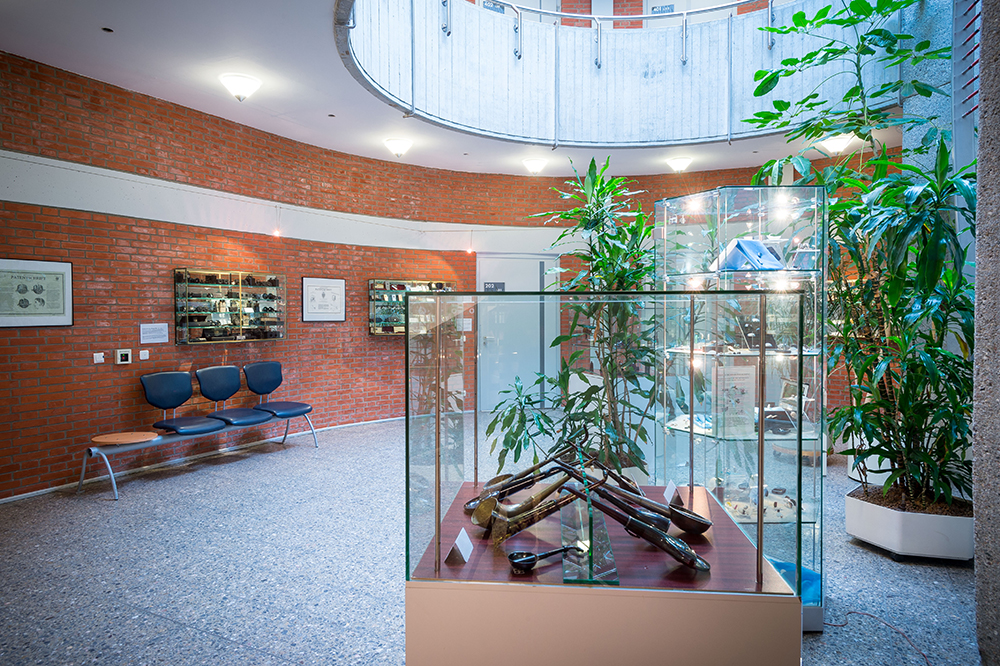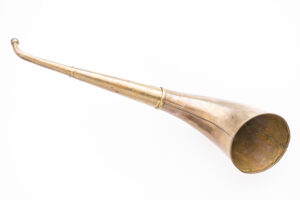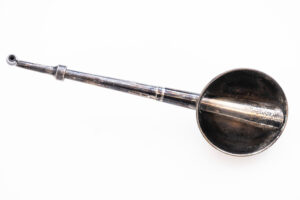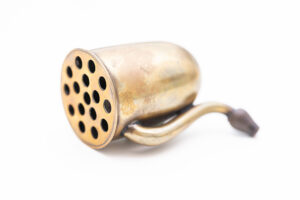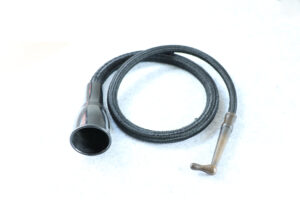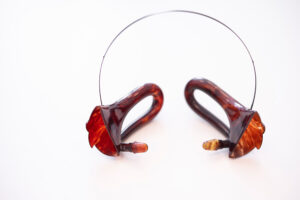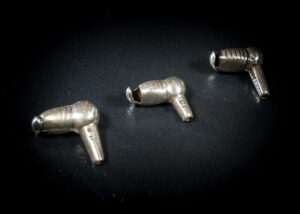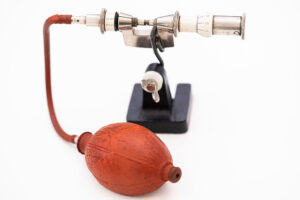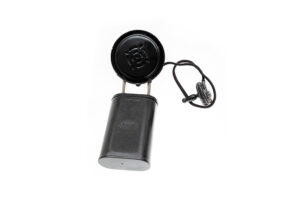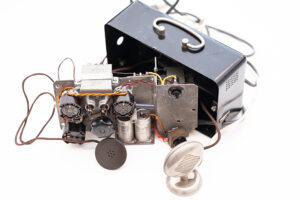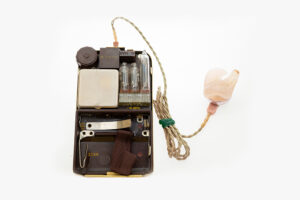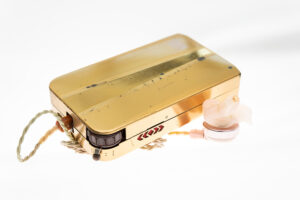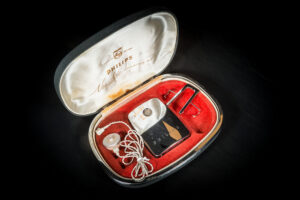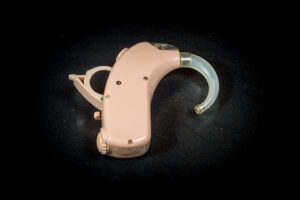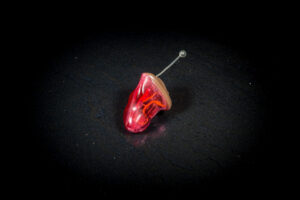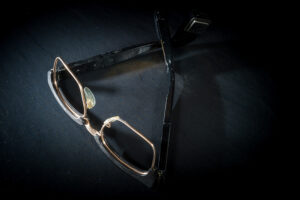Hearing Device Museum at the Campus Hearing Acoustics
A donation from hearing-aid professional and collector of hearing devices Aubrey Miller laid the foundation of Germany’s biggest collection of hearing aids and audiological technology at the Campus Hearing Acoustics. Several thousand exhibits document the development and history of hearing aids and our profession since the 18th century.
The museum is open during school times free of charge. Upon request, we are happy to organize a guided tour. Just contact the service center at the main entrance, write us an e-mail or give us a call.
In the following we have put together a brief overview on the exhibits from the various eras:
-
Ear trumpets, Hearing pans, Hearing bell
Ear Trumpet (1800 to 1900)
Classic design: amplification to max. 30 decibel; amplification effect is based on a big surface for sound intake; strong resonances depending on the length of the horn; e.g. no amplification at around 1.600 Hz., amplification varies strongly for all audible frequencies; due to the lack of measuring devices, it could only be constructed experimentally basedHearing pans (approx. 1850 to 1900)
Special construction: bundling of sound waves (earlier referred to as „sound rays”) in a parabolic pan.Hearing bell (end of 19th century)
Compact ear trumpet; often a coiled tube within a sound absorbing bell; low amplification; less resonances; not as noticeable as long ear trumpet, some of them were elaborately decorated and silver-plated; measured amplification 15 to 20 decibel at 2.5 kHz -
Hearing tubes, Headset sound receptor, first in-ear hearing-aids
Hearing tubes (as of 1820)
Carried, concealed in cloth sleeves, direct speaking in short distances (patented by Pastor Dunker); another advantage was the low-cost production, which may explain the widespread of these devicesHeadset sound receptor (end of 19th century)
“Ear glasses”, worn on both ears, made directional hearing possible; „stereo effect“ with handsfree wearing; still produced today;First in-ear hearing aids (patented in 1923)
First, only mechanical-acoustic in-ear hearing aids, silver-plated; small and barely noticeable, however, almost ineffective as far as the amplification is concerned; miniature ear trompet -
Early hearing examination devices
Barany Drum (1908)
Examination device to determine remaining hearing by use of extreme noise; use up to present; in earlier days also used for sound masking of the other ear during hearing testsGalton Whistle (1885)
Hearing examination device to determine high frequency hearing losses through an adjustable whistle sound; used in clinics and doctor’s offices -
Carbon transmitter devices
Carbon hearing-aids (1901 – 1935)
First electrical hearing-aids, use of telephone technology with carbon transmitter and electro-magnetic receiver; both placed in series with dry-cell battery; required big microphone surface; often used double microphones; short distance speaking into the microphone was possible; limited frequencies (300 to 3.000 Hz) -
Vacuum tube hearing devices
Table hearing device (1937)
Hearing-aid with transistor technology; due to the need for a power supply of the big vacuum tubes, it was not portable; first hearing aid, which increased the sound electronically.Pocket hearing devices with miniature tubes (as of 1945)
Portable hearing-aids with electronic sound amplification, miniature tubes of only 4,8 mm Æ allowed for a smaller construction; low tube-anode voltage made the use of batteries possible (one for the tube heating, one for the anode voltage). -
Transistor devices, BTE devices, IE devices
Pocket hearing aids with transistors (since 1954)
Electronic hearing-aids; smaller through use of transistor technology; no longer need for anode batttery; lower power consumption, progressive technologyBehind-the-ear hearing aids (since 1957)
Efficient hearing devices; Through miniaturization of microphone, amplifier, receiver, and battery (mercury silver cell) the devices were now so small, that they could be worn behind the ear. With the use of integrated electronic components the size could be reduced even more; transmission from receiver via hearing tube to an individually adapted earpiece made of synthetic material, which offers diverse opportunities for further acoustic improvements; microphone was now worn on the ear, so so irritating frictional noises are avoided; lower head shadow effect for better directional hearing, especially in case of 2 hearing devices.In-the-ear hearing aids (since 1969)
Hearing-aids to be worn in the auricle or even in the hearing canal, hence very close to the natural sound intake; advantages for directional hearing; very small, hardly visible hearing aids; micro-electronic components are assembled in an individually shaped plastic or metal shell. -
Hearing glasses
Hearing glasses (since 1954)
Combination of hearing aid and glasses; barely noticeable; in earlier days for reasons of space microphone and pre-amplifier on one side, on the other side, final amplifier, receiver and battery; a medical aid compensating two impairments; elegant hearing glasses are still in use today; relevance for CROS supply.Bone conduction hearing-aids (as of 1960)
Use of a particularly stable spectacle frame (or headset), allowing structure bone sound to impact directly on the cranial bone behind the ear canal (Mastoid); makes hearing possible with not functioning middle ear; today often replaced by bone anchored hearing systems.
.




